CHILE
Santiago

Santiago
Santiago
Santiago, officially Santiago de Chile, is the capital of Chile. The city is located in the central valley of the country at an altitude of 520 meters above sea level. Santiago was founded in 1541. It is the capital of the Santiago metropolitan area of the province of the same name. According to the 2002 census, 5,428,590 residents live in the metropolitan area. The historic center of the city is particularly beautiful with 19th century neoclassical architecture and winding side streets with buildings in art deco, neo-gothic and colonial style. Santiago is located on the Mapocho River and is surrounded by a number of green hills. You can see the imposing Andes mountains all over from the city.
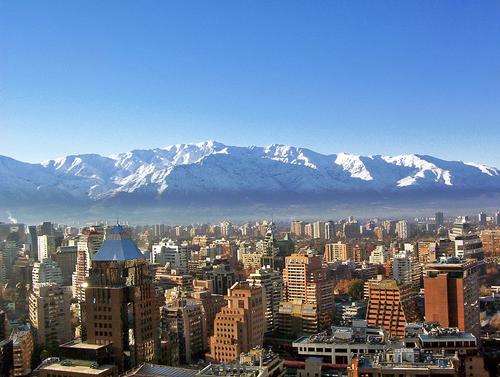 Santiago with the Andes mountains in the backgroundPhoto: Victor san martin CC 2.0 Generic no changes made
Santiago with the Andes mountains in the backgroundPhoto: Victor san martin CC 2.0 Generic no changes made
Due to its steady economic growth over the decades, the city has developed into a modern metropolis. Santiago is Chile's cultural, political and financial center and the seat of many multinational corporations. The Chilean executive and judicial bodies are based in Santiago, with Congress in nearby Valparaiso.
| advertisement |
| Hotels Santiago |
Location
The coordinates of Santiago are: 33 ° 27'0 'South latitude and 70 ° 40'0' West longitude. The city is located in the middle of the Santiago valley, the valley is a wide belt of fertile land surrounded by mountains. Santiago is located at an altitude of 520 meters above sea level. The city is flanked by the main Andes chain on the east and the Chilean coast on the west. The highest peak is the Tupungato volcano at 6,570 meters.
Weather
Santiago has a cool Mediterranean climate with relatively warm dry summers (November to March) with temperatures reaching 35 °C on the hottest days. Winters (June-August) are humid with cold mornings and daily temperatures of up to 13 °C, the minimum temperature being a few degrees above freezing. The average rainfall is 360 mm per year, mainly concentrated in the cooler months (May to September). Snowfall is very rare. The predominant wind blows from the southwest during the summer, but there is less wind in the winter.
History
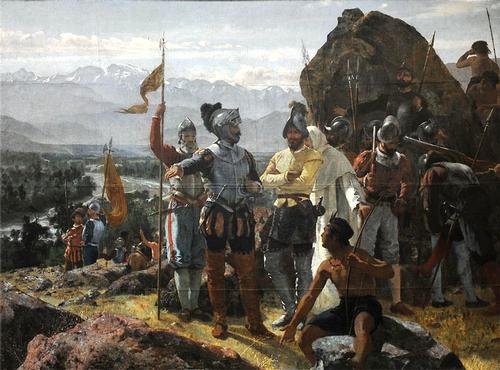 Painting about the foundation of Samtiago painted by Pedro LiraPhoto: Public Domain
Painting about the foundation of Samtiago painted by Pedro LiraPhoto: Public Domain
Santiago was founded by the Spanish Conquistador Pedro de Valdivia on February 12, 1541, under the name of Santiago de Nueva Extremadura. Native Indians continuously resisted during a series of conflicts. In September 1541 a three-year war began against the Spanish occupiers. At the time, the Conquistadores were in a dire situation due to constant food shortages. Despite threats from Indian attacks and natural disasters such as earthquakes and floods, Santiago quickly became an important city. The early settlers built the first major buildings in the city, including the Cathedral in 1561 and the San Francisco Church from 1618.
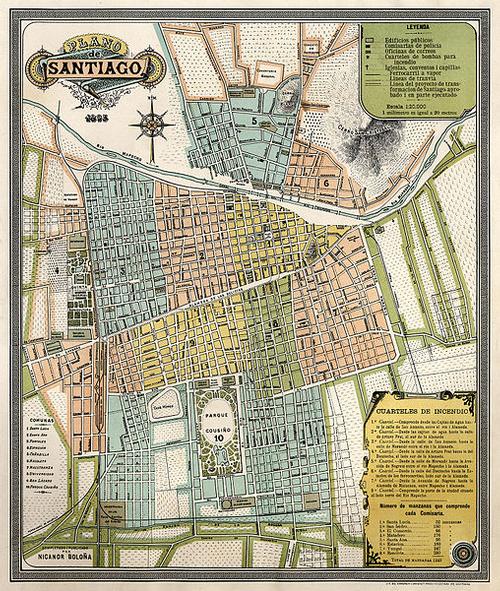 Map of Santiago from 1895Photo: Public Domean
Map of Santiago from 1895Photo: Public Domean
On February 12, 1817, when the Spanish royalists were defeated, Chile declared its independence. During the years of the Republic, institutions such as the University of Chile (Universidad de Chile), the School of Arts and Crafts, the Museum of Fine Arts (now Museum of Science and Technology) and the National Museum of Natural History were established.
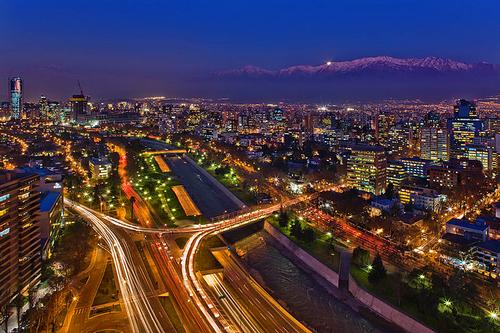 Centrum of Santiago in the 21th centuryPhoto: Javmoraga CC 3.0 Unported no changes made
Centrum of Santiago in the 21th centuryPhoto: Javmoraga CC 3.0 Unported no changes made
In the 1930s, Santiago was transformed into a modern, industrialized city. In the following decades, the city continued to grow rapidly due to the settlement of a large number of settlers from the rural areas of Chile. With the 1973 coup d'état, a military regime was established in Chile. The military terror lasted until the early 1980s when a new government was elected according to a neoliberal economic model and market economy. A strong earthquake hit the city on March 3, 1985, when many old buildings were destroyed.
Sights
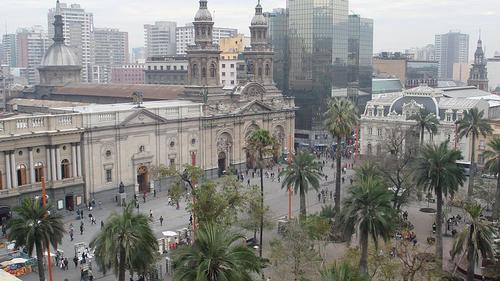 Plaza de las Armes Santiogo ChiliPhoto: Raul CC 2.0 Generic no changes made
Plaza de las Armes Santiogo ChiliPhoto: Raul CC 2.0 Generic no changes made
The Plaza de las Armes is the center of the city. In this square you will find several important buildings and other sights. The square is very old and dates back to the time when Santiago was founded. The National Historical Museum is on the north side of the Plaza de las Armes. This museum describes the history of Chile from the pre-Columbian period to the present day. The cathedral can be found on the west side of the square. The original building was destroyed by fire, the current building dates from the second half of the 18th century. The Italian architect Toesca built the town hall between 1785 and 1790.
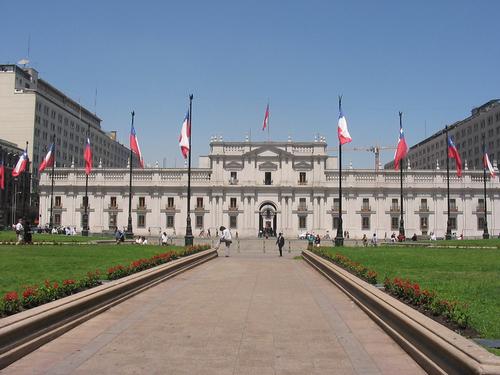 Lo Moneda Presidentieel palac in Santiogo ChiliPhoto: JorgeGG CC 3.0 Unported no changes made
Lo Moneda Presidentieel palac in Santiogo ChiliPhoto: JorgeGG CC 3.0 Unported no changes made
La Moneda is the presidential palace, it is a colonial-style building and an important historical landmark. In this palace, Salvador Allende was shot dead during the military coup by Pinochet in 1973. Today the palace has been restored and is considered a symbol of democracy. You can book a guided tour of the building, it is free but you must book in advance.
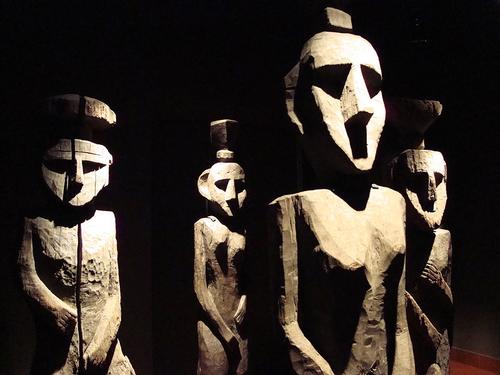 Mapuche Statues in the museum forr Precolumbian ArtPhoto: Koppas CC 3.0 Unported no changes made
Mapuche Statues in the museum forr Precolumbian ArtPhoto: Koppas CC 3.0 Unported no changes made
The Museum of Pre-Columbian Art displays artifacts from all over Central and South America. The collection is very extensive and covers a period of more than 10,000 years. The museum is located near the Plaza de las Armes.
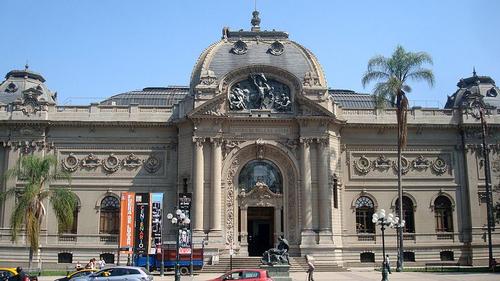 Musea Belles Artes SantiagoPhoto: Carlos Yo CC 4.0 International no changes made
Musea Belles Artes SantiagoPhoto: Carlos Yo CC 4.0 International no changes made
The Museo Bellas Artes (fine arts museum) is the flagship of the museums in Santiago and for good reason. It is a collection of contemporary Chilean art and some of the best works in the country. The Museo de Arte Contemporáneo is adjacent to Bellas Artes and it is actually an extension of that museum. Please note there is a separate entrance fee for each museum, but Museo Bellas Artes is free on Sundays.
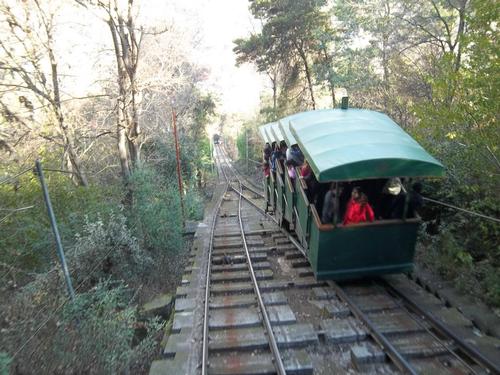 Cable car to Cerro San Cristobal in SantiagoPhoto: Dario Alpern CC 3.0 Unported no changes made
Cable car to Cerro San Cristobal in SantiagoPhoto: Dario Alpern CC 3.0 Unported no changes made
The city has many beautiful parks, such as the Cerro San Cristobel with the Santiago Zoo. This park is located at an altitude of 880 meters and you can easily get there by cable car. The view of the city from this park is phenomenal. The Forrestal Park is another beautiful park located in the center of the city, next to the Mapocho River.
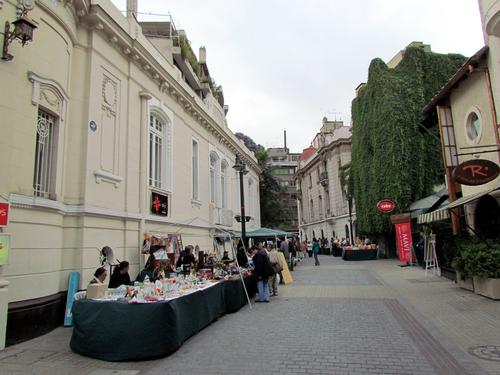 Barria Bellavista SantiagoPhoto: David Berkowitz (CC BY 2.0) no changes made
Barria Bellavista SantiagoPhoto: David Berkowitz (CC BY 2.0) no changes made
The Barrio Bellavista is the bohemian district of Santiago and the district is very popular with tourists. Here you will find narrow streets and many shops and restaurants. You can buy all kinds of handmade products at the market.
Tips
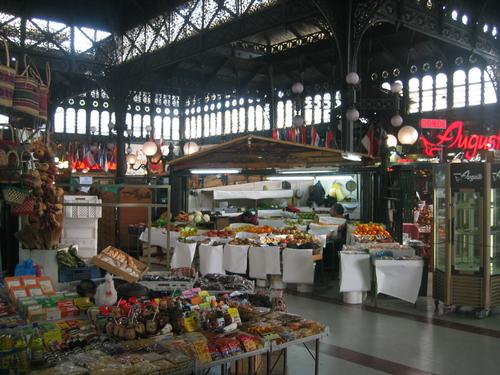 Mercado Central SantiagoPhoto: Almonroth CC 3.0 Unported no changes made
Mercado Central SantiagoPhoto: Almonroth CC 3.0 Unported no changes made
Santiago has many great markets. The most famous is Los Dominicos. Here you will find fossils, books, handicraft products and much more. On weekends there are many artists who provide live music. Another well-known covered market is the Mercado Central, which is an iron-built market hall where you can mainly buy fish. You can also have a nice lunch here.
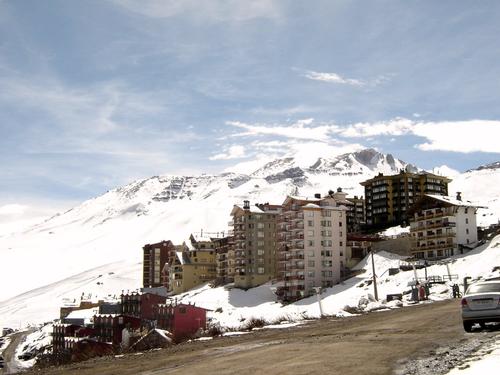 El Colorado SantiagoPhoto: Alfredo Cofré CC 2.0 Generic no changes made
El Colorado SantiagoPhoto: Alfredo Cofré CC 2.0 Generic no changes made
There are ski areas to the east of the city (Valle Nevado, La Parva, El Colorado). El Colorado is located high (about 3000 meters above sea level) in the Andes and is less than 40 kilometers from Santiago. The village has more than 100 slopes of different levels that can be reached via a large number of ski lifts.
Useful links Santiago
BBC Country ProfilesWorld Fact Book Explore all Countries
How to call
Last updated May 2025
Copyright: Team - The World of Info